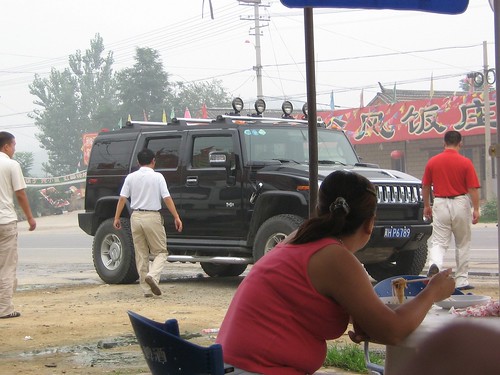Sichuan Tengzhong’s Hummer Bid Faces Chinese Regulatory Hurdles
(Source: Wall Street Journal)
The biggest hurdle to the historic sale of General Motors Corp.’s Hummer brand to a little-known Chinese manufacturer of dump trucks and industrial machinery may be receiving Beijing’s seal of approval.
The Obama administration has already expressed strong support for the proposed sale to Tengzhong Heavy Industrial Machinery Co. But before it can buy Hummer, Tengzhong, based in Sichuan province, needs support from three different Chinese government agencies governing overseas investment, economic planning and China’s tight controls on foreign exchange.
China’s economic planning agency will have to weigh the Sichuan-based company’s desire to buy the company against its policies to encourage more fuel-efficient vehicles and automobile-industry consolidation.
Meanwhile, a visit to Tengzhong’s facilities, where workers make small batches of machinery parts at a time, highlight questions about the company’s technical readiness to manufacture a complex passenger vehicle — especially if some manufacturing of the vehicles eventually shifts to China, as is “logical” if the bid succeeds, a person familiar with the situation said.
Normally, China’s high-profile outbound investments involve government ministries at every step of the process, because the buyers are owned by the central government. Tengzhong, however, is privately held, with few assets and no experience in commercial automobiles.
“There aren’t many precedents for this transaction,” says Jeanette Chan, a partner at law firm Paul Weiss in Hong Kong.
She notes new rules that came into effect May 1 require a number of approvals before Tengzhong and GM can sign a binding agreement. The rules stipulate that overseas investments of more than $100 million require central government approvals, while provincial governments can sign off on smaller deals.
Central government agencies expected to review the deal include the Ministry of Commerce, the National Development and Reform Commission and the State Administration of Foreign Exchange. Of these, the commerce ministry’s approval is most important; if its approval process runs smoothly, it will take at least 30 working days, Ms. Chan said.
While the company appears to have ties in the local government, that won’t likely translate to any clout on the national level. On Wednesday, Tengzhong’s CEO Yang Yi said the company was “in the middle of the approval process.”
Key criteria include whether the company will be able to fund the purchase and succeed in developing the business. Tengzhong hasn’t released information about its finances, but it appears to be relatively small. Analysts expect Tengzhong to pay $200 million to $300 million for Hummer.
Click here to read the entire article.



